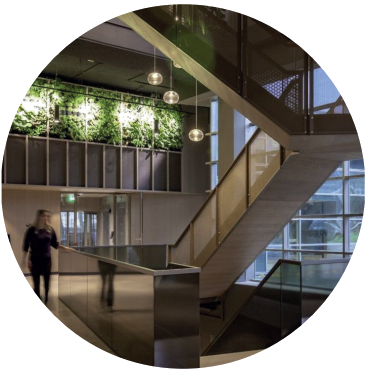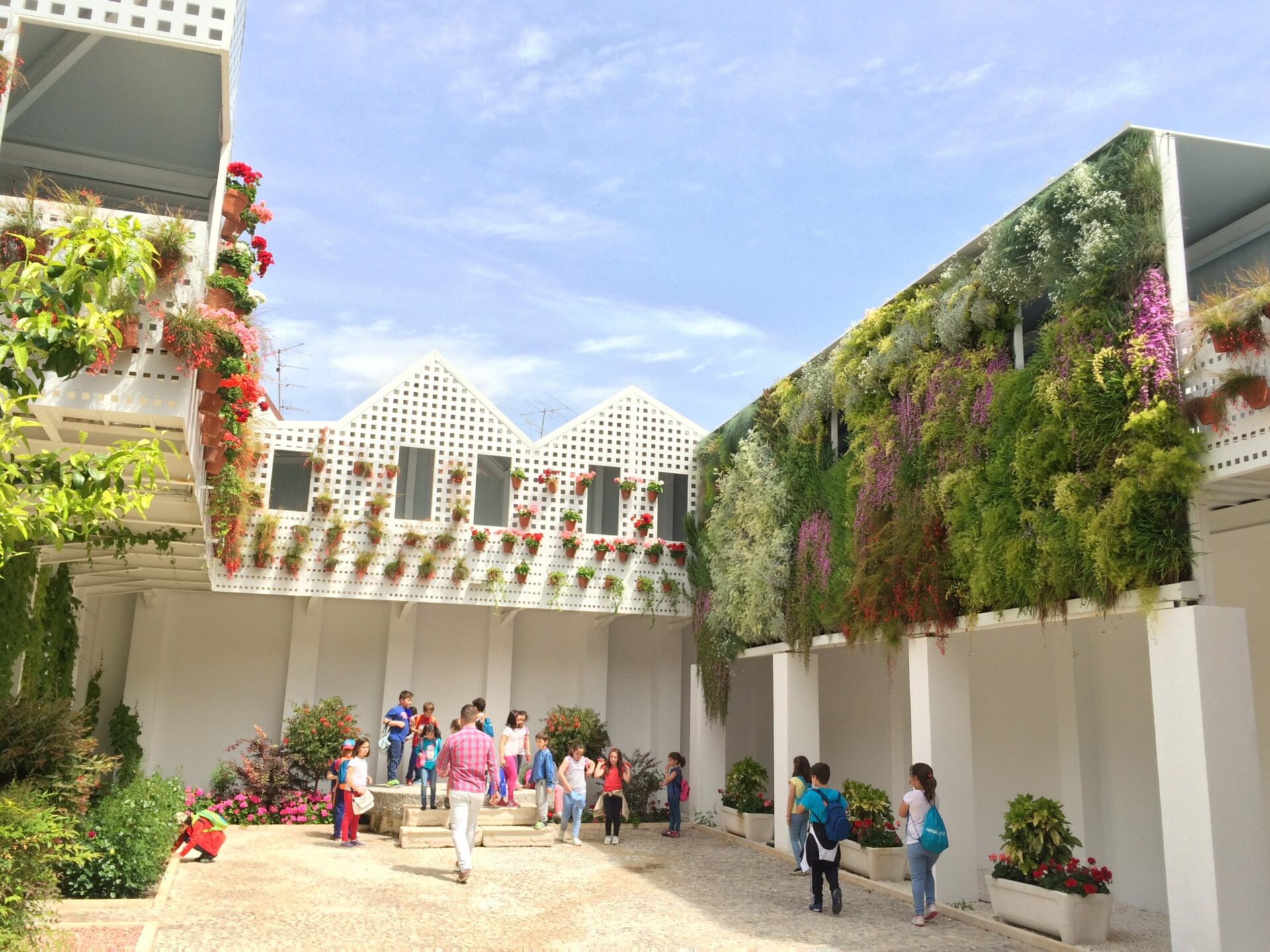BIOPHILY
BIOPHILY
BIOPHILY
Urban greening systems satisfy our innate need to connect with nature. This need is imprinted in our genes after millions of years of evolution. Connecting with green spaces and other living things brings us physical and psychological well-being. Faced with the natural disconnection that comes with living in the city, nature-based solutions are an excellent solution.
BIOPHILIC DESIGN
Biophilic design creates spaces for living and working, incorporating plants, colours and natural light to connect with nature and improve our psychological well-being. This design trend increasingly relies on the use of living wall systems to increase people’s well-being.
Spaces connected to nature bring the following benefits:
-
THEY IMPROVE WORKSPACES
They reduce stress and improve people’s well-being, creativity and productivity, creating better working spaces.
-
THEY IMPROVE VISUAL SENSATION
Indoor living walls create aesthetically pleasing environments that reduce mental fatigue, raise dopamine, serotonin and oxytocin levels, and reduce absenteeism.
-
THEY CREATE HEALTHIER SPACES
Scientific studies show that plant environments reduce mental health problems, including depression, anxiety and nervous system disorders.
-
THEY IMPROVE COGNITIVE DEVELOPMENT
They are associated with increased cognitive development in children and greater intelligence and creativity for those who move around in green areas. They also improve concentration and reduce mental fatigue in adults.


BIOPHILY
Urban greening systems satisfy our innate need to connect with nature. This need is imprinted in our genes after millions of years of evolution. Connecting with green spaces and other living things brings us physical and psychological well-being. Faced with the natural disconnection that comes with living in the city, nature-based solutions are an excellent solution.
BIOPHILIC DESIGN
Biophilic design creates spaces for living and working, incorporating plants, colours and natural light to connect with nature and improve our psychological well-being. This design trend increasingly relies on the use of living wall systems to increase people’s well-being.
Spaces connected to nature bring the following benefits:
-
THEY IMPROVE WORKSPACES
They reduce stress and improve people’s well-being, creativity and productivity, creating better working spaces.
-
THEY IMPROVE VISUAL SENSATION
Indoor living walls create aesthetically pleasing environments that reduce mental fatigue, raise dopamine, serotonin and oxytocin levels, and reduce absenteeism.
-
THEY CREATE HEALTHIER SPACES
Scientific studies show that plant environments reduce mental health problems, including depression, anxiety and nervous system disorders.
-
THEY IMPROVE COGNITIVE DEVELOPMENT
They are associated with increased cognitive development in children and greater intelligence and creativity for those who move around in green areas. They also improve concentration and reduce mental fatigue in adults.



